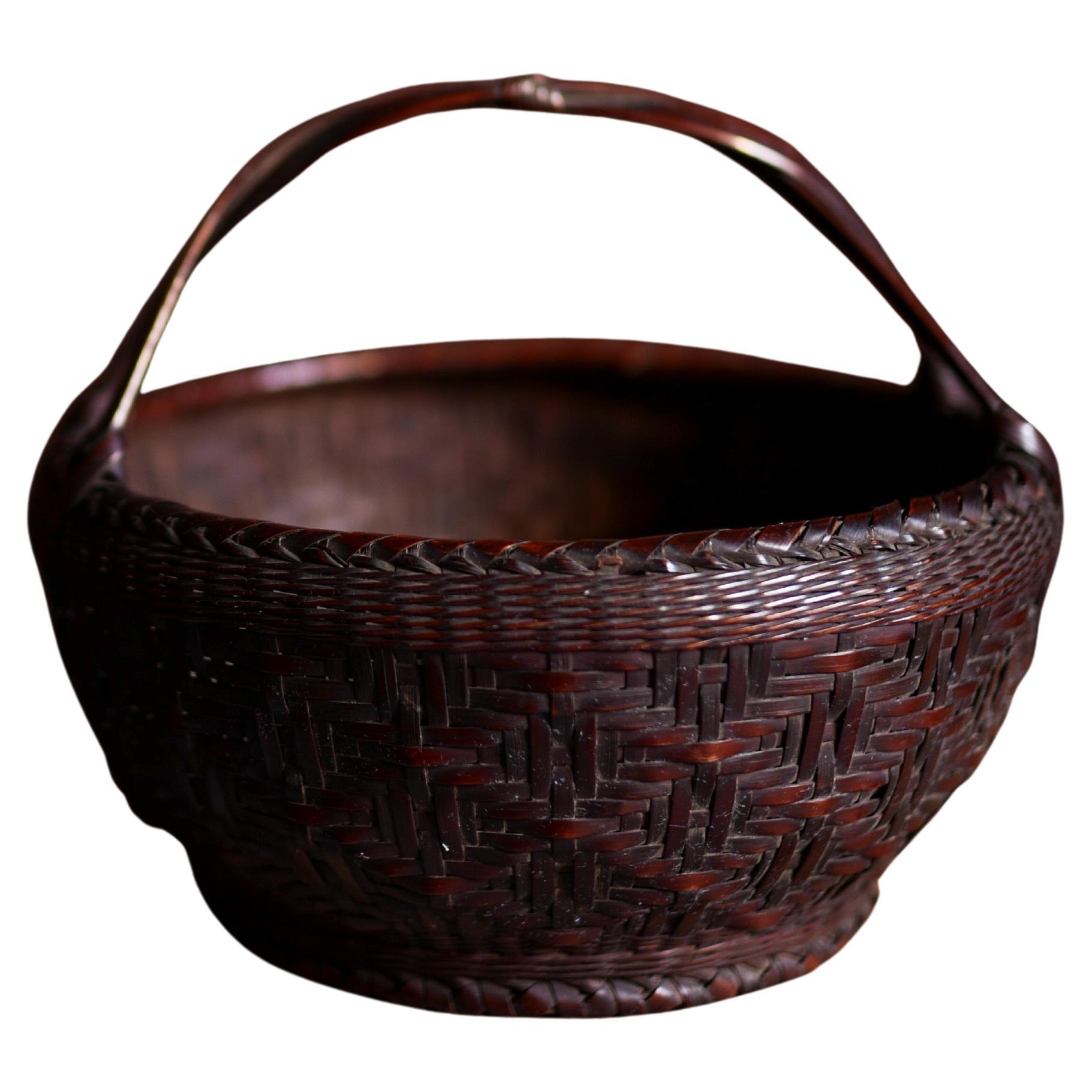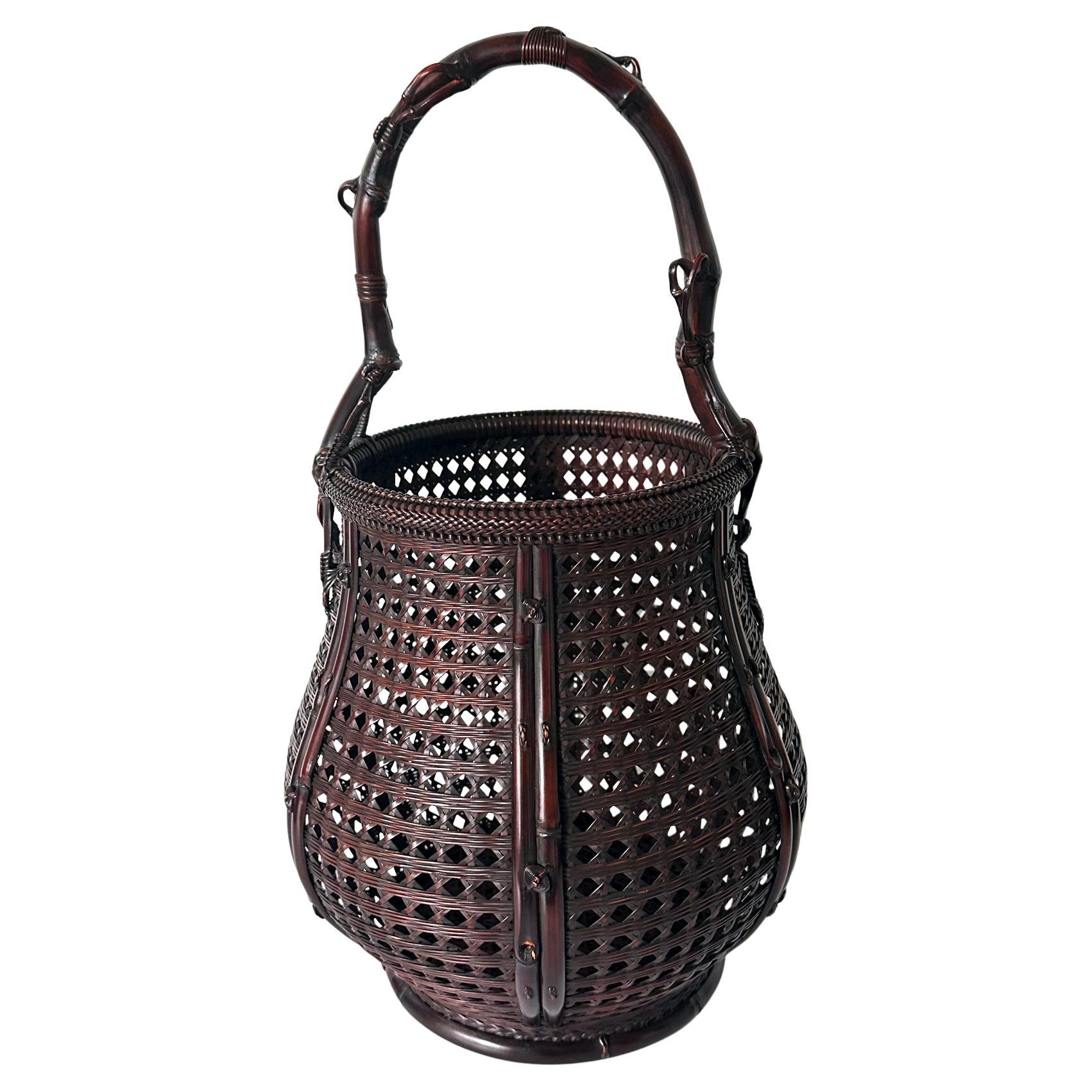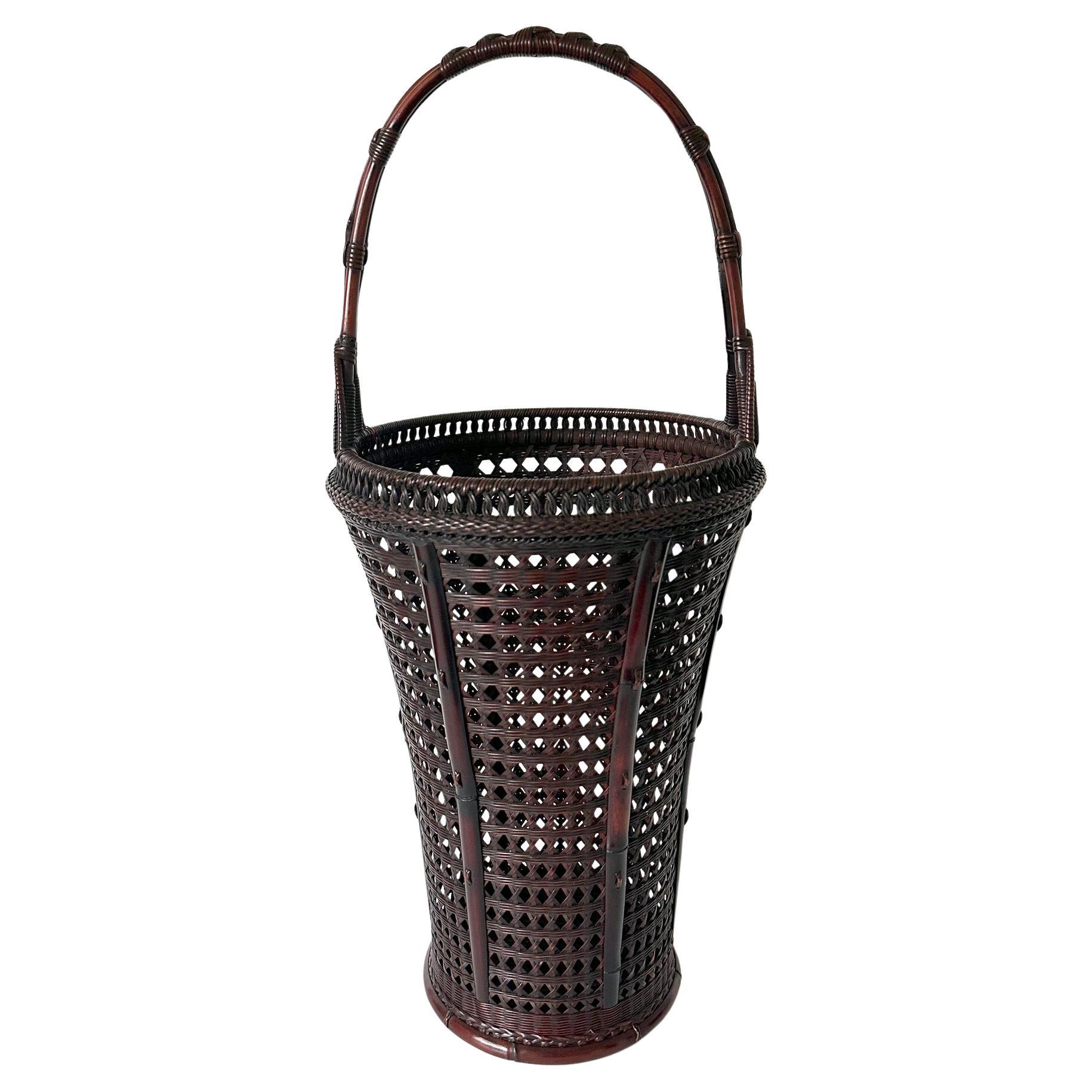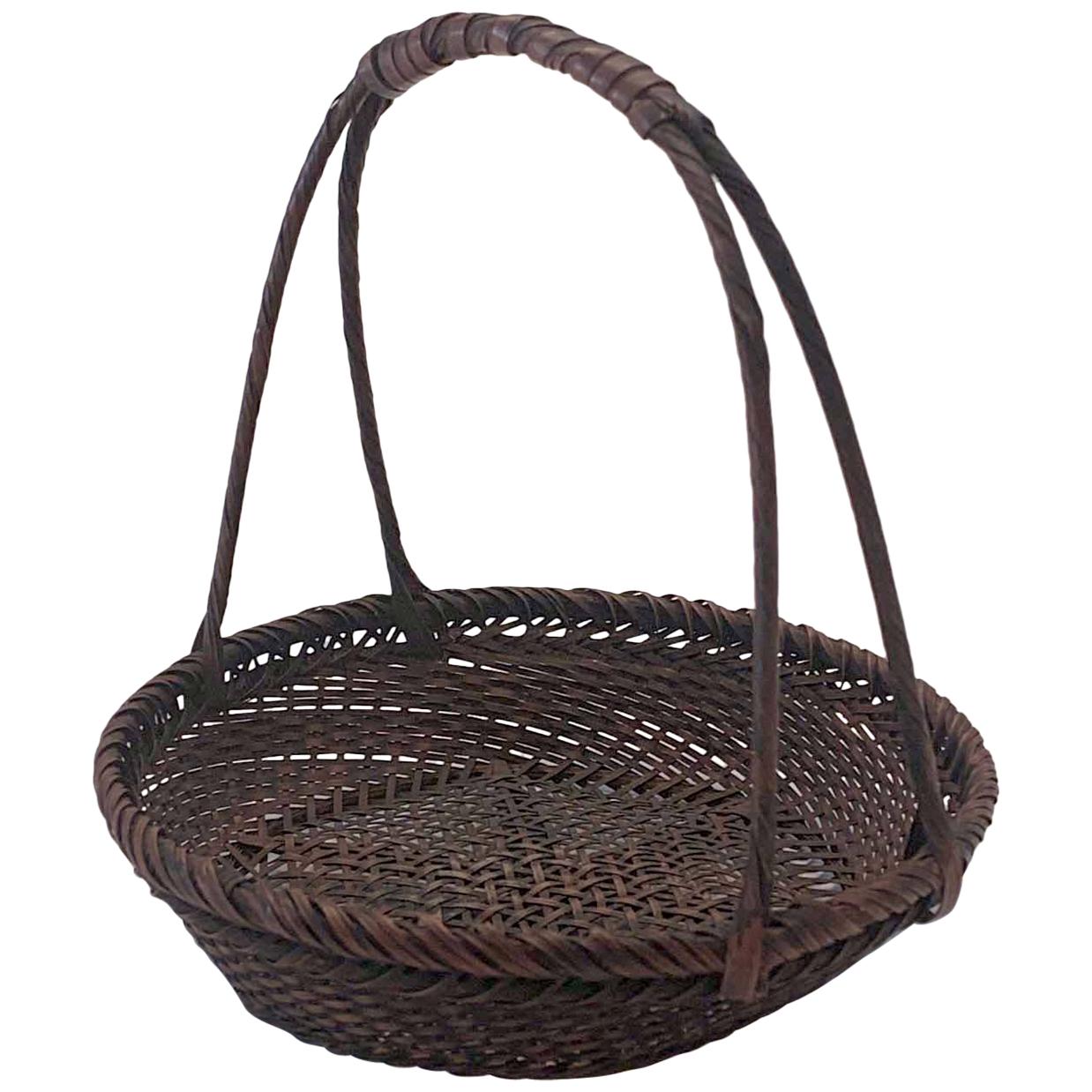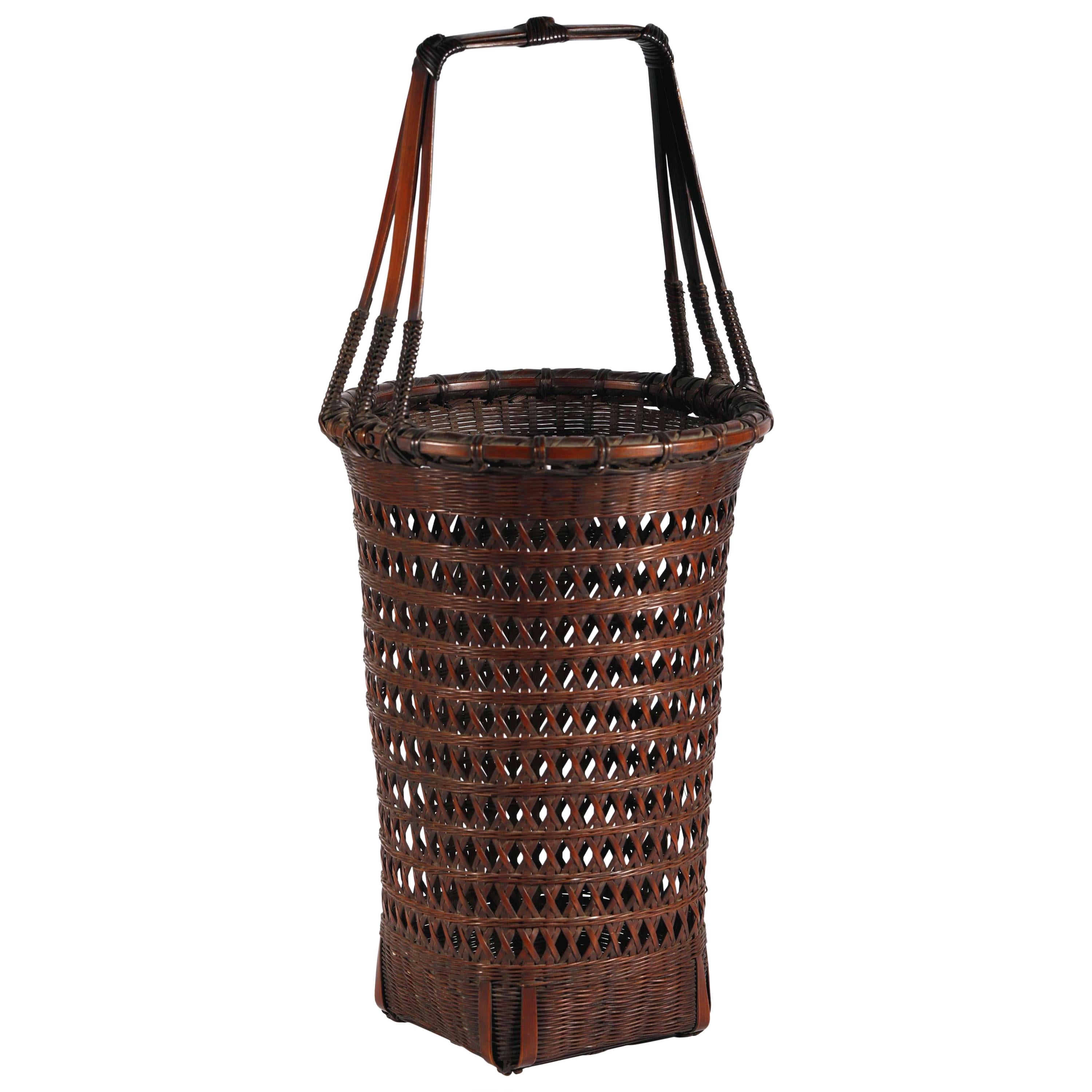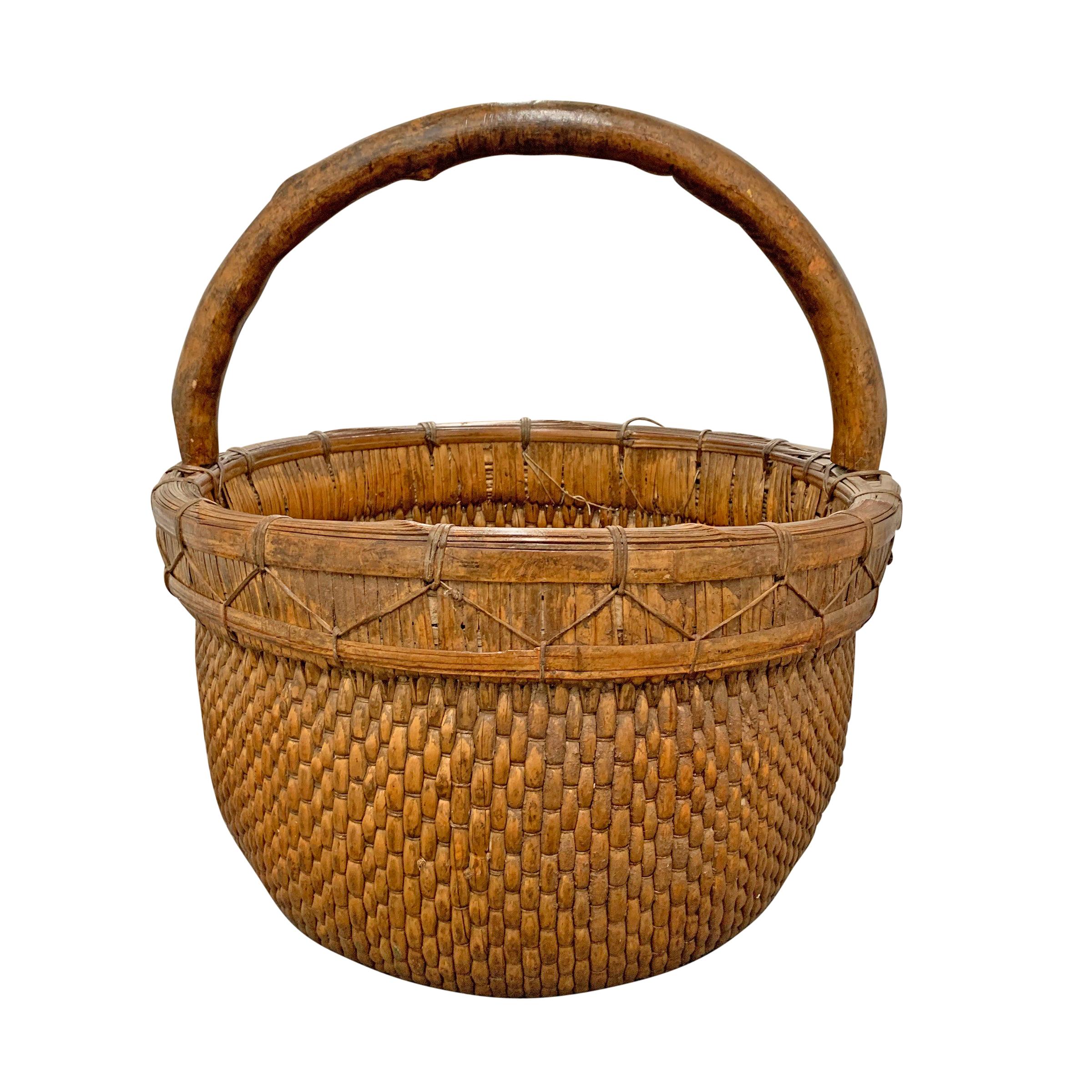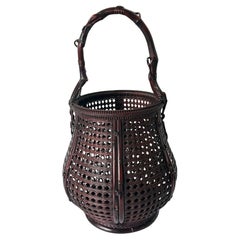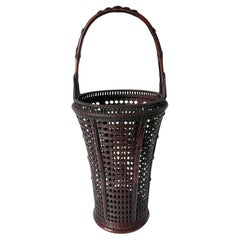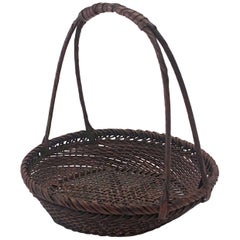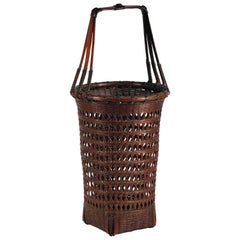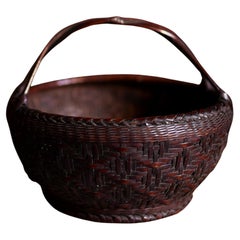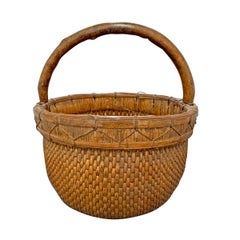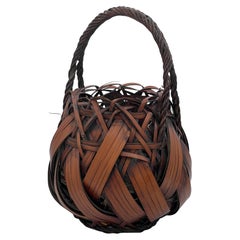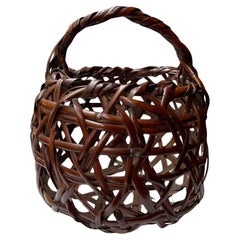Items Similar to Large Japanese Woven Bamboo Morikago Basket by Maeda Chikubosai I
Want more images or videos?
Request additional images or videos from the seller
1 of 17
Large Japanese Woven Bamboo Morikago Basket by Maeda Chikubosai I
$8,500
£6,307.33
€7,347.17
CA$11,832.06
A$13,176.07
CHF 6,857.42
MX$162,459.33
NOK 87,334.43
SEK 82,085.90
DKK 54,819.04
Shipping
Retrieving quote...The 1stDibs Promise:
Authenticity Guarantee,
Money-Back Guarantee,
24-Hour Cancellation
About the Item
A large and impressive Japanese basket in the form of a morikago by Maeda Chikubosai I (1872-1950) circa first half of the 20th century. Chikubosai I was from the Kansai Region and active in Sakai, Osaka prefecture. He was instructed by Wada Waichisai I, (1851-1901).
Morikago is a shallow open basket with handle. It was traditionally used to display fruits, sometimes flowers, during Sencha tea ceremony. In contrast to Chanoyu, Sencha ceremony uses loose green tea leaves instead of tea powder. The placement of loose fruits in the basket meant that the pattern of the bottom, which is often elaborate, was meant to be visible.
This morikago was beautifully constructed with bent bamboo frame and twill plaits for the body. The bottom of the basket features a double diamond pattern achieved with a variation of plover plait. The bifurcated handles was bundle-plated with a rather free spirit approach. They show a poetic suggestion of movement, as if the bamboos were still swaying in the wind. The basket has a copper insert that fits perfectly and it is quite possibly the original. The basket is signed on the base "Chikubosai". The style of the signature shows that it was made by Maeda Chikubosai I.
For another Morikago basket by Maeda Chikubosai I, see page 79 of "Masters of Bamboo" by Rinne.
For the study of the signature of Chikubosai I "Baskets Master Pieces of Japanese Bamboo Art 1850-2015 page 542.
- Creator:Maeda Chikubosai (Artist)
- Dimensions:Height: 14.5 in (36.83 cm)Diameter: 16 in (40.64 cm)
- Style:Japonisme (Of the Period)
- Materials and Techniques:
- Place of Origin:
- Period:
- Date of Manufacture:First Half of the 20th Century
- Condition:Wear consistent with age and use. Wonderful smoked patina overall, a couple of scattered dark mark apparently inherent to the bamboo material. Copper tray shows patina and discoloration on the base.
- Seller Location:Atlanta, GA
- Reference Number:1stDibs: LU945023916952
About the Seller
4.9
Platinum Seller
Premium sellers with a 4.7+ rating and 24-hour response times
Established in 2006
1stDibs seller since 2010
561 sales on 1stDibs
Typical response time: <1 hour
- ShippingRetrieving quote...Shipping from: Atlanta, GA
- Return Policy
Authenticity Guarantee
In the unlikely event there’s an issue with an item’s authenticity, contact us within 1 year for a full refund. DetailsMoney-Back Guarantee
If your item is not as described, is damaged in transit, or does not arrive, contact us within 7 days for a full refund. Details24-Hour Cancellation
You have a 24-hour grace period in which to reconsider your purchase, with no questions asked.Vetted Professional Sellers
Our world-class sellers must adhere to strict standards for service and quality, maintaining the integrity of our listings.Price-Match Guarantee
If you find that a seller listed the same item for a lower price elsewhere, we’ll match it.Trusted Global Delivery
Our best-in-class carrier network provides specialized shipping options worldwide, including custom delivery.More From This Seller
View AllJapanese Woven Ikebana Bamboo Basket Maeda Chikubosai I
By Maeda Chikubosai
Located in Atlanta, GA
A woven bamboo ikebana hanakago (flower basket) with handle circa first half of the 20th century (Taisho or Showa era) by Japanese bamboo master Maeda Chikubosai I (1872-1950). In th...
Category
Early 20th Century Japanese Modern Vases
Materials
Bamboo
Japanese Woven Ikebana Bamboo Basket Maeda Chikubosai I
By Maeda Chikubosai
Located in Atlanta, GA
A tall woven bamboo ikebana hanakago (flower basket) circa first half of the 20th century (Taisho or Showa era) by Japanese bamboo master Maeda Chikubosai I (1872-1950). Hand-woven w...
Category
Early 20th Century Japanese Modern Vases
Materials
Bamboo
Important Miniature Japanese Bamboo Basket by Hayakawa Shokosai I
Located in Atlanta, GA
A miniature bamboo basket woven by Hayakawa Shokosai I (1815-1897) circa 1885, an important example of the work by the artist who is considered as the founding father of Japanese modern bamboo art and the first ever signed his own work thus elevating bamboo weaving from a craft into an art form. The miniature basket was traditionally used during Sencha tea ceremony. It was woven from bamboo (madake) and rattan using...
Category
Antique 1880s Japanese Japonisme Decorative Baskets
Materials
Bamboo, Rattan
Japanese Bamboo Basket Ikebana by Yamashita Kochikusai
By Yamashita Kochikusai
Located in Atlanta, GA
Yamashita Kochikusai (1876-1947) was a bamboo artist from Osaka, Kansai region. He apprenticed under Wada Waichisai I (1851-1901), becoming independent in 1901. His students include ...
Category
Vintage 1920s Japanese Japonisme Decorative Baskets
Materials
Bamboo
Japanese Woven Bamboo Brazier by Maeda Chikubosai I
By Maeda Chikubosai
Located in Atlanta, GA
An important piece of bamboo basketry art by Maeda Chikubosai I (1872-1950), circa 1920s-1930s. The body of the bamboo brazier was made with smoked bamboo (susudake) and rattan and with a built-in copper liner brazier. Mat plaiting, diagonal plaiting and twining were used to construct the robust body while hexagonal plaiting was used for the base. It is signed on the base Chikubosai Kore o tsukuru (Chikubosai made this). The copper brazier...
Category
Vintage 1920s Japanese Japonisme Decorative Baskets
Materials
Copper
Japanese Bamboo Ikebana Basket by Yamamoto Chikuryosai I Shoen
Located in Atlanta, GA
An important Japanese bamboo Ikebana basket by Yamamoto Chikuryosai I (also known as Chikuryusai I, Shoen after 1929) (1868-1945). Active in Osaka, Kansai region, he was advised by Wada Waichisai I. After 1929, he signed his work as Shoen (Shoen made this), such as this one.
This basket was made using "sooted" bamboo (susutake in Japanese). This bamboo materials was collected from traditional thatched-roof houses that had been exposed to decades of smoke from a hearth or cooking fire, therefore the basket displays a deep rich patina that is hard to attain by color-lacquering. The basket featured a large rounded barrel form with handle. The body was constructed with a twill plaiting variation of a more relaxed and loose weave. It allows the light coming through to render the piece a lighter sense. Parallel plaiting was used to reinforce the body with stripes of bamboo, while adding more visual constrict to a free spirited background. Twisted bamboo strips form rope-like handle and the top rim. It is signed "Shoen Made This" on the base. Two-piece water container made from bamboo trunk is retained with the piece as shown.
For the artists other and similar work, see baskets masterpieces of Japanese Bamboo Art...
Category
Vintage 1930s Japanese Japonisme Decorative Baskets
Materials
Bamboo
You May Also Like
Japanese Handwoven Bamboo Basket with Handle, Japan, 20th Century
Located in Edogawa-ku Tokyo, JP
A finely crafted Japanese a handwoven bamboo basket with an arched handle.
Made from naturally darkened bamboo, the basket features an intricate geometric weave and a gracefully cur...
Category
Early 20th Century Japanese Decorative Baskets
Materials
Bamboo
Mid-20th Century Chinese Woven Reed Basket
Located in Chicago, IL
A mid-20th century Chinese woven reed gathering basket with a thick bentwood handle attached to a thick heavy band with woven reed lacing.
Category
Mid-20th Century Chinese Rustic Decorative Baskets
Materials
Reed
Japanese Late Meiji Period (1868-1912) Woven Bamboo Basket, Early 20th Century
Located in New York, NY
Japanese Late Meiji Period (1868-1912) Woven Bamboo Basket, Early 20th Century
DIMENSIONS
Height: 14 inches
Diameter: 8.5 inches
ABOUT
A finely hand-woven Japanese bamboo basket fr...
Category
Early 20th Century Japanese Japonisme Decorative Baskets
Materials
Bamboo
Japan, Bamboo basket hanakago by Tanabe Chikuunsai II (1910-2000).
By Tanabe Chikuunsai II 1
Located in PARIS, FR
Japan, Bamboo basket hanakago by Tanabe Chikuunsai II (1910-2000).
Tanabe Chikuunsai II (1910-2000), based in Osaka and Sakai, was the son of Tanabe Chikuunsai I. He was the second...
Category
20th Century Japanese Decorative Baskets
Materials
Bamboo
$3,659 Sale Price
20% Off
Antique Japanese Bamboo Basket with Handle, Early 20th Century
Located in Edogawa-ku Tokyo, JP
A refined example of Japanese bamboo craftsmanship, this handwoven basket features a gently rounded body and arched handle, showcasing a rhythmic open-weave pattern. Likely used for ...
Category
Early 20th Century Japanese Decorative Baskets
Materials
Bamboo
Japanese Antique Bamboo Basket 1900s-1940s / Wabisabi
Located in Chōsei District Nagara, JP
This is an old basket made in Japan.
The materials used are bamboo, mountain grape bark, and straw, giving it the warmth of natural materials.
It was made in the early Showa period (...
Category
Mid-20th Century Japanese Showa Decorative Baskets
Materials
Bamboo, Straw
More Ways To Browse
Antique Japanese Basket
Japanese Flower Bowls
Antique Copper Basket
Japanese Large Bowls
Antique Japanese Plates And Bowls
Japanese Tea Plates
Bamboo Pattern Plate
Woven Copper Basket
French Waste Basket
Leather Waste Basket
Vintage Willow Basket
Duck Basket
Mid Century Modern Trash Can
Mid Century Wastebasket
Antique Rice Bowls
Brass Waste Bin
Chinese Rice Basket
French Champagne Basket
